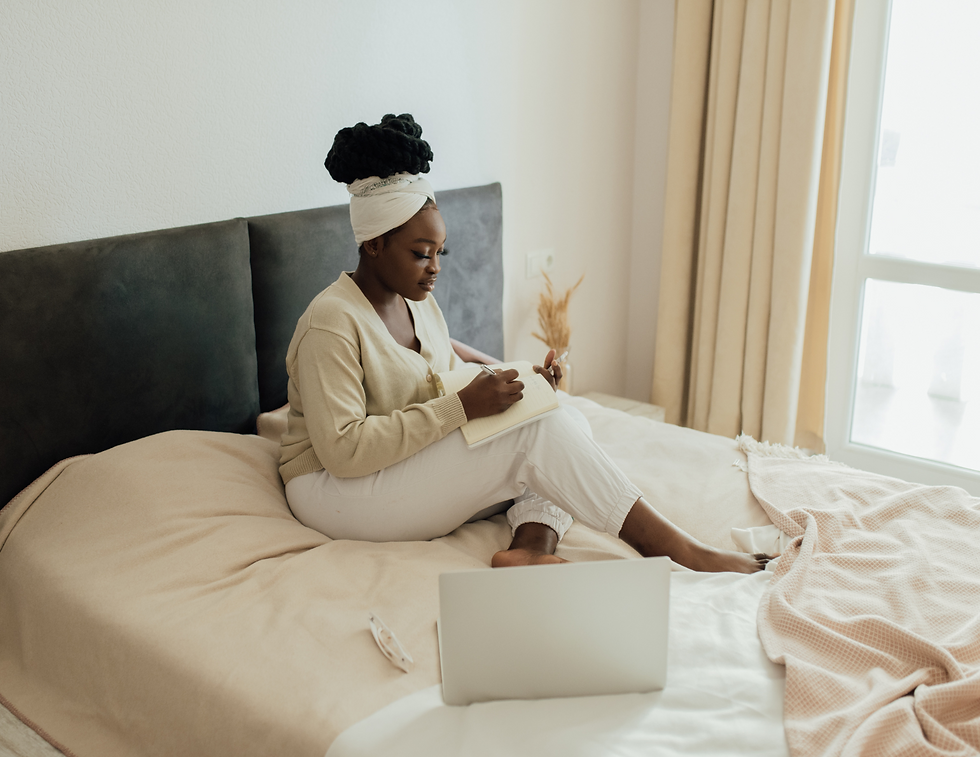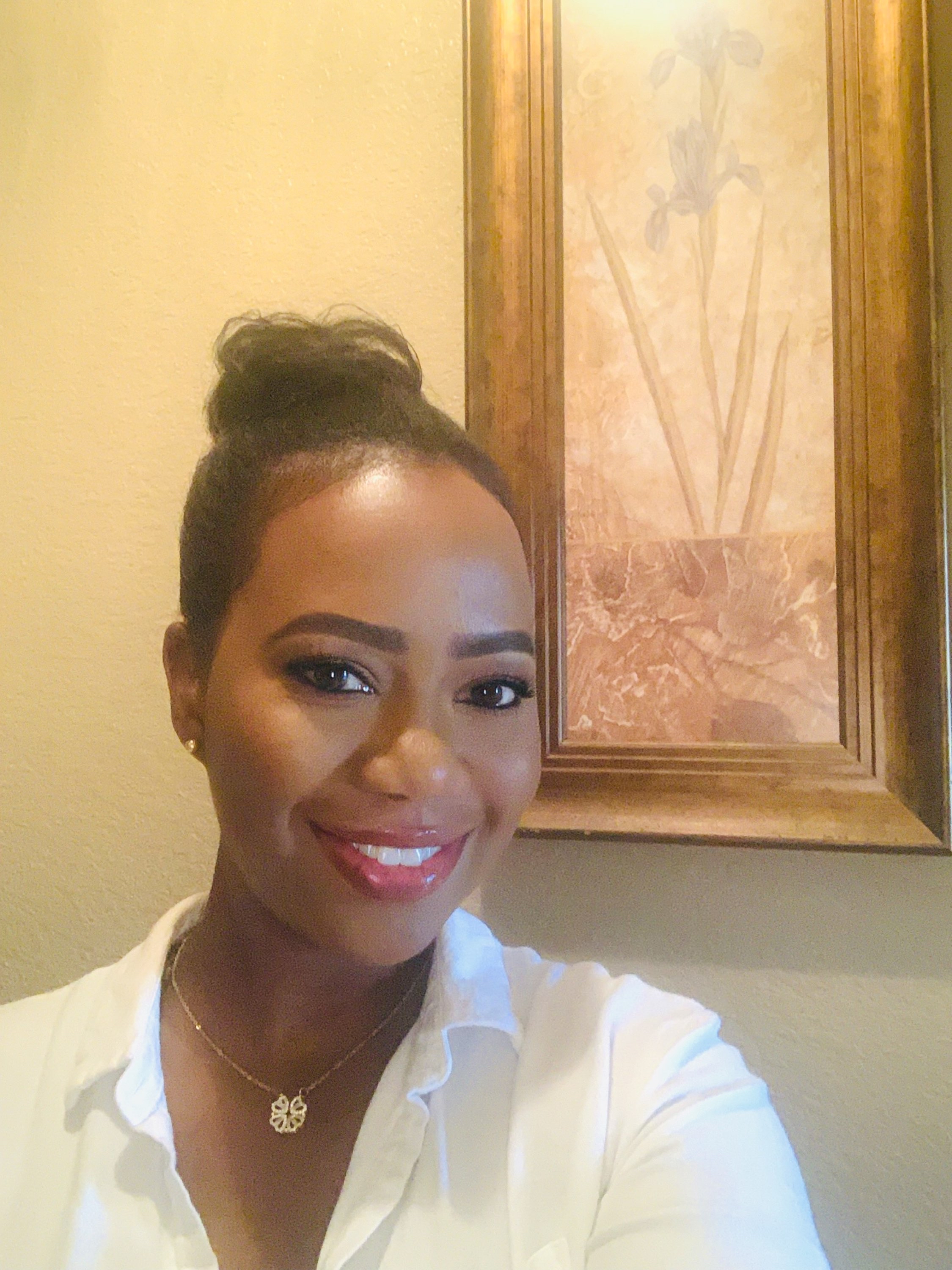7 Approachable Ways to Turn Your Home Into a Safe Space While Healing
- Kim Ba, AFPA-CHWC
- Aug 9
- 5 min read
Updated: Sep 7

Healing is a process that takes time—not days, not weeks, and definitely not on anyone else’s timeline but your own. And healing means something different for everyone.
It’s not linear, not always visible, and rarely easy. But it’s a necessary and beautiful process we must allow ourselves to undergo in order to move forward.
Sometimes that means letting go of what no longer serves us—whether it’s clutter, chaos, old energy, or expectations that don’t reflect who we are becoming.
Whether you’re recovering from emotional pain, burnout, grief, trauma, or simply trying to find yourself again, your environment plays a huge role in how safe you feel.
When we are in this process, we want our space to be calm, grounding, and aligned with where we are—not where we “should” be. The truth is, healing often looks messy. So creating a home that doesn’t demand perfection, but instead offers softness, safety, and restoration? That’s everything.
This post is for anyone who’s still in the middle of healing—who wants their home to be more than just a place they sleep, but a space that feels like peace. Not just pretty. Not just organized. But truly safe.
1. Redefine What “Safe” Means to You
Before you start lighting candles or rearranging furniture, ask yourself: What does “safe” actually feel like to me?
For some, it’s quiet. For others, it’s warmth. For some, it’s boundaries and control. Your definition of safety might be influenced by your past experiences, and that’s okay. Start there. When you know what emotional safety feels like, you can begin to create a space that mirrors it back to you.
You might journal on questions like:
What kind of environment do I feel most relaxed in?
Are there certain sounds, scents, or textures that comfort me?
What do I want to not feel in my home anymore?
This kind of intentional reflection keeps you from just copying aesthetic trends and helps you create something real and supportive.
2. Create for Peace, Not Perfection
Healing doesn’t look like a perfectly curated space. Sometimes it looks like a blanket on the floor where you sit to breathe. Or dishes in the sink because your energy went to your mental health today.
Don’t pressure yourself to create a “healing home” that looks a certain way. Instead, aim for feelings: calm, warm, unjudged, safe.
A few simple shifts to bring this feeling in:
Soft lighting (lamps instead of overheads)
Cozy textures (a worn-in throw blanket can feel more healing than a new couch)
No-stress zones (like a no-phone corner or a chair by the window for thinking)
You’re not designing for guests or Instagram. You’re designing for the you who is still figuring it all out.

3. Set Up Small Spaces for Restorative Rituals
Healing often asks for slowness—and your space should support that.
Designating areas for gentle routines can make your home feel like it’s helping you, not pulling from you. This doesn’t require a big budget or a spare room. A corner, a shelf, even just a tray can become your sanctuary.
Some ideas:
A calming tea station with your favorite mugs and blends
A basket with your journal, essential oils, and affirmations
A window seat for morning light and quiet moments
A bedside “emotional support drawer” (think: heating pad, lavender balm, tissues, your go-to comfort book)
These little rituals remind your body and mind that this space is for tending to yourself—not just performing productivity.
4. Pay Attention to What Disrupts Your Peace
Sometimes, the very things in our home can quietly hold tension. An old photo, a color that overwhelms you, a room that feels heavy for reasons you can’t quite name.
You don’t need to explain it to anyone—but you do need to listen to yourself.
If something feels like it disrupts your peace, ask:
Can I remove or replace this?
Can I change the energy in this room (e.g., rearrange it, smudge it, open a window)?
Can I place something comforting here instead?
You don’t need to “move on” from your healing to change your space. Sometimes changing your space is part of how you move through your healing.
5. Use Calming, Grounding Elements That Engage the Senses
If you want your space to support healing, think with your senses:
Sight: Soft colors, gentle lighting, decluttered surfaces
Smell: Essential oils, natural candles, or incense that makes you breathe slower
Touch: Fabrics that feel good on your skin—think plush throws, smooth sheets, or worn-in cotton
Sound: White noise, nature sounds, or a playlist that makes you feel held
Taste: Herbal teas, nourishing snacks, or whatever comfort food your inner child loves
These small sensory choices communicate safety and care to your nervous system, even on the hard days.

6. Build Boundaries Into Your Space
Healing isn’t just about how your home looks—it’s about what (and who) you allow into it.
You get to decide what energy comes through your door, even if it means saying no to visitors, noise, or expectations that drain you.
A few quiet boundaries to consider:
No heavy conversations after a certain hour
A "do not disturb" signal for when you need solitude
Spaces that are just for you, without explanation
Turning your phone off or on “Do Not Disturb” when needed
Let your home reflect the new boundaries you're building—because your healing doesn’t need to perform for anyone else.
7. Fill Your Home With Hope, Not Just Healing
You don’t have to decorate your space with “healing quotes” or vision boards—unless that truly speaks to you. What matters is that your space includes things that remind you: you’re still becoming.
Some ideas:
A framed photo that makes you smile (not one that makes you ache)
Books that have helped you feel understood
Art that reflects softness, power, or growth
A sticky note on your mirror that says “you’re allowed to rest”
These aren't just decorative. They’re anchors. They speak to the parts of you that might forget how far you’ve come when the day gets heavy.
And remember—your home doesn’t need to feel “healed” to feel like hope.
Final Thoughts
Your home doesn’t have to be perfect to be powerful. It just has to feel like yours. A space that offers you room to feel, to breathe, to fall apart and put yourself back together again.
And if you’re still in the thick of it—just know this: You deserve to feel safe now. Not later.
Not when it all makes sense. But right now, in this moment, exactly where you are.
Looking for more support in your healing journey? Read: Becoming Unavailable for What Drains You—And Doing It Without Guilt.
See you at the next post. ❤️
Follow me on Facebook at @everyherwellness and @kim.ba0918.














Cool to know